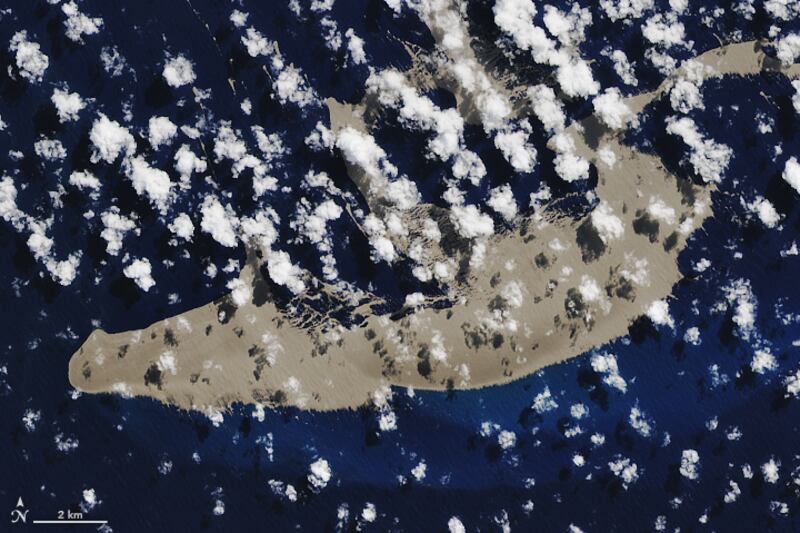SALT LAKE CITY — An Australian couple reportedly spotted what they described as a “total rock rubble slick” while sailing to Vanatu.
The couple said the bundle of rocks stretched for miles and miles, according to The Washington Post. And the rocks bumped into their boat.
“It was quite eerie, actually,” Larissa Hoult told CNN. “The whole ocean was matte.”
“The rocks were kind of closing in around us, so we couldn’t see our trail or our wake at all,” Michael Hoult told CNN. “We could just see the edge where it went back to regular water — shiny water — at night.”
The couple posted their findings on Facebook, and have since received information from scientists asking them more about what they found.
So what did they see? Apparently, it was a “raft” of volcanic rock that is about the size of Manhattan, which is slowly drifting toward Australia, according to multiple reports.
NASA’s Earth Observatory spotted the “raft” just days after an underwater volcano reportedly erupted near Tonga, an island in the South Pacific.
“Many of the world’s volcanoes are shrouded by the waters of the oceans. When they erupt, they can discolor the ocean surface with gases and debris. They also can spew masses of lava that are lighter than water. Such pumice rocks are full of holes and cavities, and they easily float,” according to NASA.
The raft — made of pumice rock that is currently carrying sea organisms — is now drifting toward Australia. This mass is actually pretty significant because it might lead to increased habitats in the Great Barrier Reef, an area recently impacted by climate change.
Queensland University of Technology geologist Scott Bryan told Australian Broadcasting Corporation that the raft will be “covered in a whole range of organisms of algae and barnacles and corals and crabs and snails and worms” once it finally reaches Australian waters.
And that matters because it “will restore the Great Barrier Reef — which is the world’s largest coral reef and the planet’s biggest structure made by living organisms,” according to USA Today. “The reef has been compromised repeatedly by global warming, with die-offs happening at a rate that may cause it to not recover quickly enough.”
But Martin Jutzeler, a lecturer at the University of Tasmania, told BBC News that the rafts could bring invasive species into a new habitat, which could cause problems for the organisms already living there.
And, he said, the raft might separate before it ever reaches Australia.
And it might not matter. As The Washington Post reports, Terry Hughes, the director of the ARC Center of Excellence for Coral Reef Studies at James Cook University in Australia, wrote on Twitter that the raft’s organisms may not be enough to save the reef.
“Reefs will be gone unless we tackle anthropogenic heating,” he wrote.


